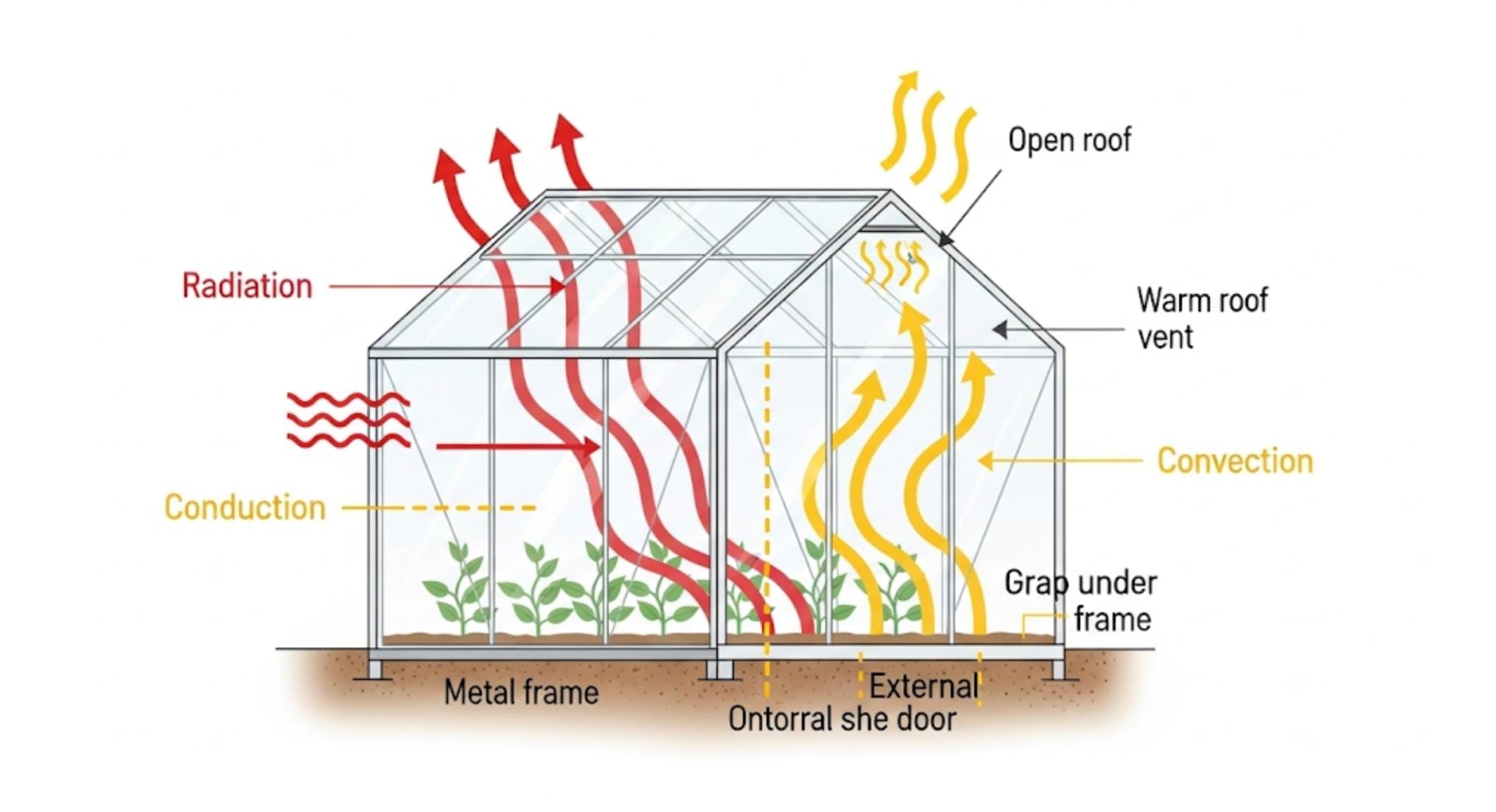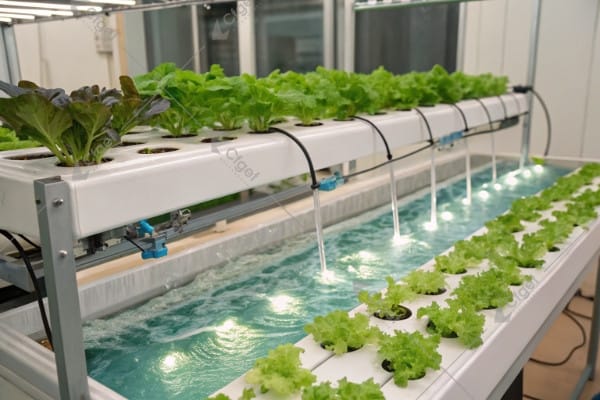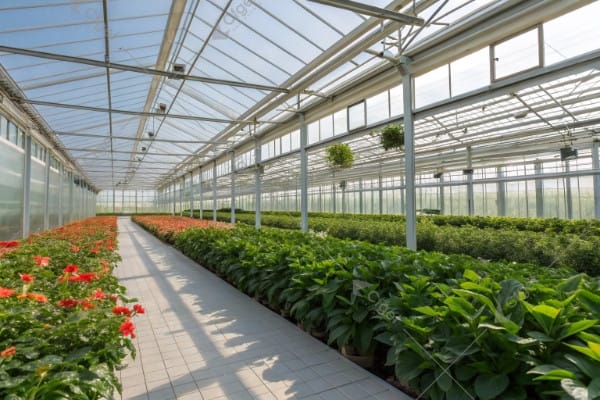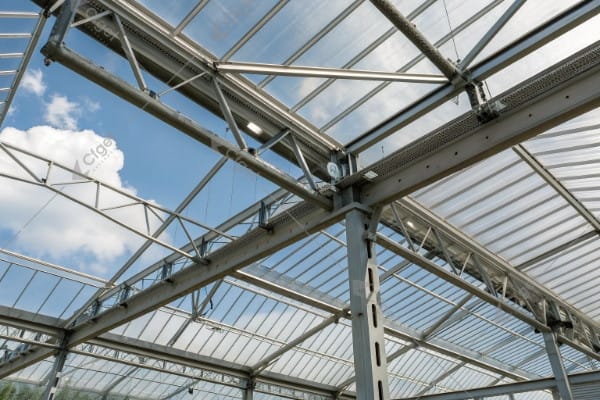Feeling overwhelmed by the complexities of modern agriculture? Solution: Want a method that boosts yields and extends growing seasons? Action: Explore greenhouse farming!
Greenhouse farming is a method of growing crops within sheltered structures, offering control over environmental factors. It allows for year-round cultivation, increased productivity, and protection from pests and extreme weather.
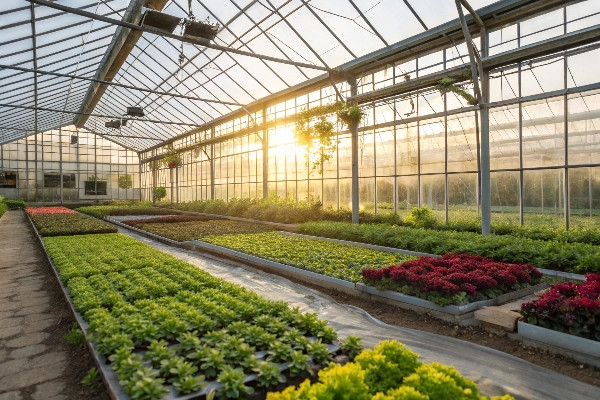
Let’s explore this farming technique. We will cover everything from basic principles to practical applications.
Don’t Miss: ——12 Common Types of Greenhouses
Greenhouse Farming Basics: Techniques, Benefits, and Challenges?
Traditional farming faces unpredictable weather and limited growing seasons. Solution: Want consistent crop production regardless of external conditions? Action: Learn about greenhouse farming basics.
Greenhouse farming involves using structures covered with transparent materials to create a controlled environment for plants. Techniques include managing temperature, humidity, light, and nutrients. It offers advantages like increased yield, but presents challenges such as initial cost.
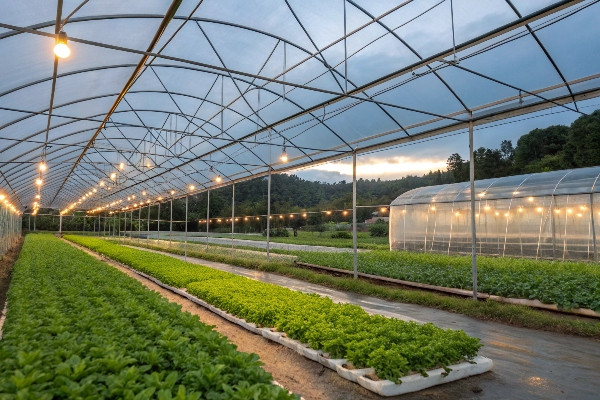
Greenhouse farming is more than just putting plants inside a structure. There are several techniques to make it work, each with advantages and disadvantages, and it needs specific skills and knowledge. Let us go through them in the table below.
| Technique | Description | Advantages | Challenges |
|---|---|---|---|
| Hydroponics | Growing plants without soil, using nutrient-rich water solutions. | Reduced water usage, faster growth rates, higher yields, minimal pest and disease issues. | High initial setup cost, requires careful monitoring of nutrient levels, power outages can be detrimental. |
| Aquaponics | Combining hydroponics with aquaculture (raising fish). Fish waste provides nutrients for plants, and plants filter the water for the fish. | Sustainable and efficient system, reduced water and fertilizer use, produces both plants and fish. | Complex system to manage, requires balancing the needs of both plants and fish, higher initial investment. |
| Aeroponics | Growing plants with their roots suspended in air, periodically sprayed with nutrient solutions. | Minimal water and nutrient usage, very high yields, rapid plant growth, excellent oxygenation of roots. | High initial setup cost, very sensitive to power outages and system failures, requires precise nutrient management. |
| Soil-based | Traditional method of growing plants in soil within the greenhouse. | Simpler setup, lower initial cost compared to soilless systems, more forgiving of minor errors. | Potential for soilborne diseases, requires soil management and amendment, may have lower yields than soilless systems. |
| Vertical Farming | Growing plants in vertically stacked layers, often using hydroponics or aeroponics. | Maximizes space utilization, ideal for urban areas, very high yields per square foot. | High initial investment, requires sophisticated environmental control systems, energy-intensive due to artificial lighting. |
How Does Greenhouse Farming Work? A Step-by-Step Overview?
Curious about the process of food coming from a greenhouse. Solution: Want to understand the daily operations within a greenhouse? Action: Read this step-by-step explanation.
Greenhouse farming works by creating a controlled environment. Sunlight enters the structure, warming the air and soil. Vents and fans regulate temperature and humidity. Irrigation systems deliver water and nutrients. This controlled environment allows plants to grow faster and produce higher yields.
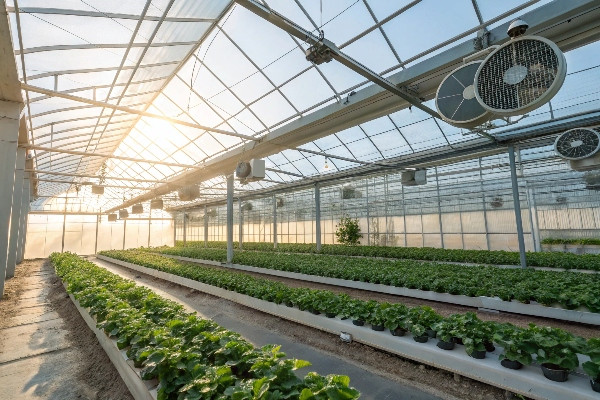
Operating a greenhouse involves more than just planting seeds. From seeding to harvesting, a lot needs to be done to make sure the plants grow well. I worked on many greenhouse projects. I can explain how it works.
Planning and Preparation:
- First, choose the right crops for the greenhouse and local market.
- Next, select the right greenhouse structure and equipment.
- Then, prepare the growing medium (soil or soilless mix).
- Finally, install irrigation, ventilation, and heating/cooling systems.
Seed Starting/Propagation:
- Start seeds in trays or small pots, providing optimal temperature and humidity.
- Or, propagate plants from cuttings or through tissue culture.
Transplanting:
- Once seedlings are strong, move them to larger containers or directly into the greenhouse beds.
- Space plants appropriately to allow for growth and air circulation.
Environmental Control:
- Monitor and adjust temperature, humidity, and light levels.
- Use vents, fans, heaters, and shading systems to maintain the best conditions.
- Control CO2 levels to promote photosynthesis.
Irrigation and Nutrient Management:
- Provide water and nutrients through drip irrigation, sprinklers, or hydroponic systems.
- Monitor nutrient levels and adjust as needed.
Pest and Disease Management:
- Inspect plants regularly for pests and diseases.
- Use integrated pest management (IPM) strategies. Biological controls, sticky traps, and, if necessary, approved pesticides.
Pollination:
- For some crops, ensure pollination by introducing bees or using manual methods.
Pruning and Training:
- Prune and train plants to improve air circulation, light penetration, and yield.
Harvesting:
- Harvest crops at the right maturity stage.
- Handle produce carefully to minimize damage.
Post-Harvest Handling:
- Clean, sort, and pack the harvested crops.
- Store produce in appropriate conditions to maintain quality.
Crop Rotation and Sanitation:
- Rotate crops to prevent soilborne diseases.
- Sanitize the greenhouse between crops to minimize pest and disease carryover.
Types of Greenhouses Used in Greenhouse Farming: Structures and Materials?
Selecting the right greenhouse structure is a crucial step. Solution: Confused about the different greenhouse types available? Action: Discover the options below.
There are various types of greenhouses, differing in structure and materials. Common structures include hoop houses, A-frame, and gutter-connected greenhouses. Covering materials range from polyethylene film to glass, each offering different levels of light transmission and insulation.

The right greenhouse type depends on the climate, crops, and budget. Here are some common types, with their pros and cons:
| Greenhouse Type | Structure | Materials | Advantages | Disadvantages |
|---|---|---|---|---|
| Hoop House (Quonset) | Curved arches, typically made of metal pipes. Simple and inexpensive. | Polyethylene film (single or double layer). | Low cost, easy to construct and move, good for extending the growing season. | Less durable than other types, may not withstand heavy snow or wind, limited height. |
| A-Frame | Peaked roof resembling the letter "A". More stable than hoop houses. | Polycarbonate panels, glass. | Good light transmission, durable, suitable for taller crops. | More expensive than hoop houses, requires more construction effort. |
| Gutter-Connected | Multiple A-frame or arched greenhouses connected at the gutters. | Polycarbonate panels, glass. | Efficient use of space, allows for better climate control, suitable for large-scale operations. | High initial investment, requires professional installation. |
| Lean-to | Attached to an existing building on one side. | Polycarbonate panels, glass. | Uses existing structure, saves space, can utilize building’s heating system. | Limited light and ventilation, may be difficult to regulate temperature. |
| Geodesic Dome | Spherical structure made of interconnected triangles. | Glass, polycarbonate panels. | Very strong and stable, excellent light diffusion, unique aesthetic appeal. | Complex construction, higher cost, may not be practical for all crops. |
| Sawtooth | Roof with a series of ridges and furrows, resembling the teeth of a saw. | Polycarbonate, glass. | Excellent ventilation due to the roof design, suitable for warm climates. | More complex construction than A-frame, may require specialized materials. |
| Retractable Roof | Greenhouse with a roof that can be opened and closed. | Polycarbonate panels, glass, retractable fabric. | Allows for maximum sunlight exposure when needed, provides protection from harsh weather, excellent ventilation. | High initial cost, requires automated systems, may be complex to maintain. |
What are the advantages and disadvantages of greenhouse farming1?
Weighing the pros and cons of any farming method is essential. Solution: Unsure if greenhouse farming is the right choice for you? Action: Examine the advantages and disadvantages listed below.
Advantages of greenhouse farming include year-round production2, increased yields, and protection from pests. Disadvantages include high initial costs, energy requirements, and the need for specialized knowledge.
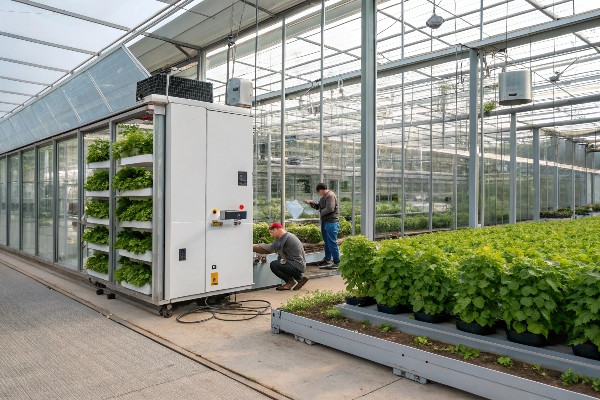
Greenhouse farming is a big decision. Let us use a table to make it easier for you to understand the advantages and disadvantages:
| Aspect | Advantages | Disadvantages |
|---|---|---|
| Production | Year-round crop production, increased yields per unit area, shorter growing cycles, higher quality produce, protection from extreme weather, reduced water usage (with efficient irrigation), minimal pesticide use. | High initial investment in infrastructure and equipment, ongoing energy costs for heating, cooling, and lighting, requires specialized knowledge and skills, potential for rapid spread of pests and diseases. |
| Environment | Reduced water consumption, lower pesticide use, less land degradation, potential for carbon sequestration. | Energy consumption can be high, plastic film disposal can be an environmental concern, potential for nutrient runoff (if not managed properly). |
| Economic | Higher profits due to increased yields and year-round production, potential for premium prices for off-season crops, creation of local jobs. | High initial costs and operating expenses, requires careful market analysis and planning, may require significant labor. |
| Social | Provides fresh, local produce year-round, creates employment opportunities, can improve food security in areas with limited arable land. | Requires access to capital and technical expertise, may not be suitable for all communities or regions. |
| Flexibility | Can be used to grow a wide variety of crops, allows for precise control over growing conditions, can be adapted to different climates and regions. | Requires careful planning and management, may not be suitable for all types of crops, can be vulnerable to power outages and equipment failures. |
| Research | Provides a controlled environment for agricultural research, allows for testing of new crops and growing techniques, can be used to develop sustainable farming practices. | Can be expensive to set up and maintain research facilities, requires specialized equipment and expertise. |
Conclusion
Greenhouse farming provides a way to grow food in a controlled environment, overcoming many challenges of traditional farming. It is efficient, but also requires careful planning and investment.

